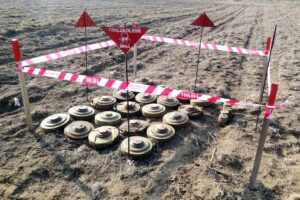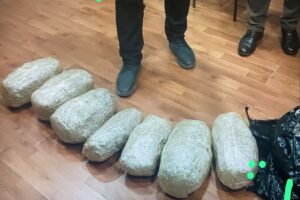Tokyo, 15 March, /AJMEDIA/
FUKUSHIMA – Wild deer at Nara Park, a popular tourist attraction in western Japan, have a unique genotype different from those of other herds on the Kii Peninsula, demonstrating more than a thousand years of being protected as messengers of gods for a shrine boasting World Heritage status, a Japanese research group says.
Collecting muscle tissue or blood samples of 294 Japanese sika deer in the prefectures of Nara, Wakayama, Mie and Kyoto between 2000 and 2016, the research team analyzed their mitochondrial DNA, which is passed from mother to child.
They found that the deer inhabiting the Nara Park area surrounding the Kasugataisha Shrine have a single haplotype, a set of DNA variations inherited together, which was not present in deer from other places, according to their recently published article.
The researchers at Fukushima University, Nara University of Education and Yamagata University also found three genetic groups on the peninsula — one in the east, another in the west and an isolated group at the park — by analyzing the animals’ nuclear DNA.
The Nara Park deer are believed to have split off from a common ancestral herd around the sixth to seventh centuries, while it is thought that the other two groups separated around the 16th century, a period of Japanese history marked by feudal wars, according to the article published in the American Society of Mammalogists’ Journal of Mammalogy on Jan. 30.
Toshihito Takagi, a Fukushima University graduate school researcher on the team, said that the findings demonstrate the wild deer’s population distribution and genetic diversity were influenced by human activity.
While the general deer population was reduced by hunting and land cultivation, the group inhabiting land near the shrine managed to keep its unique genetic lineage due to religious protections bestowed upon the animals that forbade hunting them, he said.
Additionally, war on the peninsula split the deer’s habitat, he said, although the eastern and western groups would later intermingle again.
The deer at Nara Park have been considered sacred since ancient times, due to a legend that says a deity enshrined at the Kasugataisha Shrine rode to Nara on a white deer from Kashima Shrine in Ibaraki Prefecture.
As of July, there were around 1,200 in the park surrounding the shrine, which is a UNESCO World Heritage Site, and the animals are also designated a “natural treasure” of Japan, according to Nara Prefecture.
“I am extremely surprised that the deer, which have been protected and honored by people, also have scientific importance,” Hirotada Kasannoin, the shrine’s head priest, commented about the study’s findings.









































